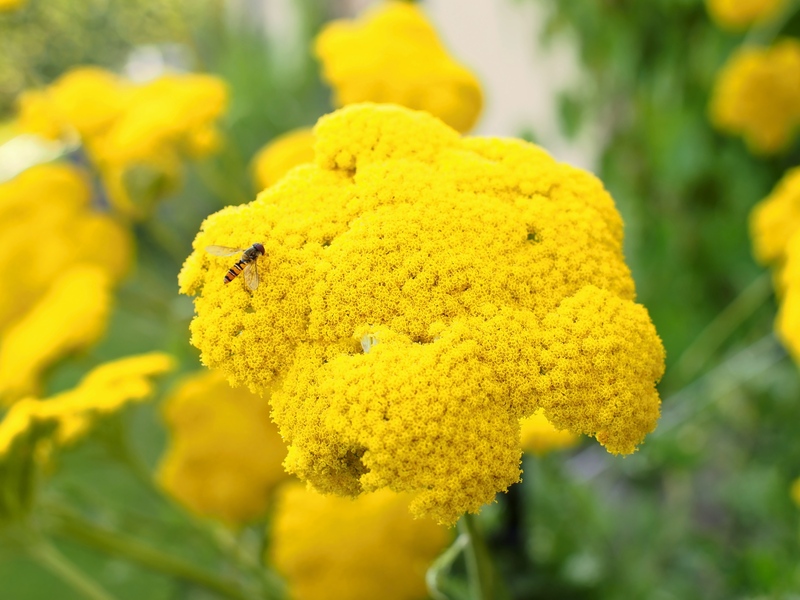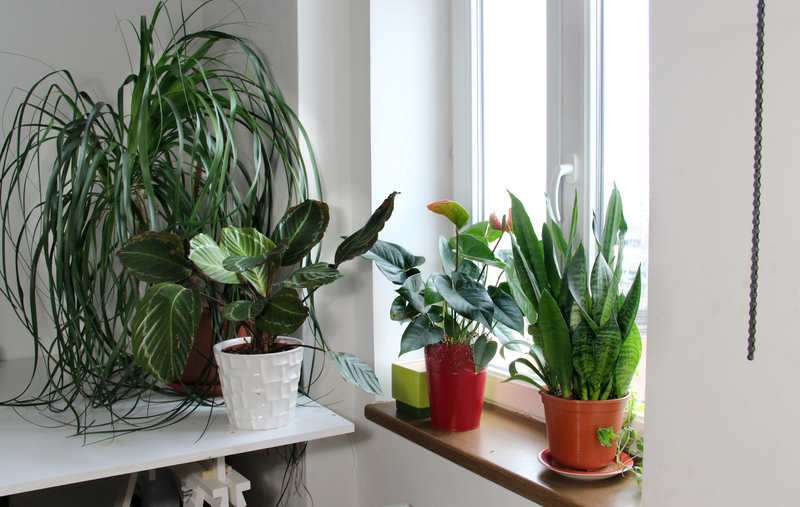Cultivating orchids: A journey from novice to expert
Posted on 20/08/2025
Cultivating Orchids: A Journey from Novice to Expert
Orchids are among the planet's most stunning and diverse flowering plants. With their intricate blooms, fascinating structures, and captivating scents, growing orchids has become a true passion for many garden enthusiasts. Embarking on the path from a beginner to an expert cultivator is both enlightening and rewarding. In this comprehensive guide, we'll take you through everything you need to know to master the art of orchid cultivation, whether you're taking your first steps or striving to add rare varieties to your collection.
Understanding Orchids: The Foundation of Your Journey
Before you can become a true orchid connoisseur, it's essential to grasp the basics. Let's explore what makes orchids so unique and how their diversity presents both challenges and opportunities to growers at every experience level.
What Are Orchids?
Belonging to the family Orchidaceae, orchids number more than 25,000 species, making them one of the largest and most varied plant families worldwide. Orchids are found on every continent except Antarctica, thriving in environments ranging from lush rainforests to arid deserts.
- Epiphytic orchids: Grow on trees; common in tropical climates.
- Terrestrial orchids: Grow in soil; prevalent in varied climates.
- Lithophytic orchids: Grow on rocks; adapted to harsher conditions.
Key Takeaway: Understanding your orchid's background is crucial for providing the right care as each type has specific needs regarding light, moisture, and substrate.

Essential Orchid Care Tips for Beginners
If you're just starting out on your orchid cultivation journey, these foundational tips will ensure your plants survive--and thrive.
Choosing Your First Orchid
Some orchids are more forgiving than others. The most popular options for first-time growers include:
- Phalaenopsis (Moth Orchid): Long-blooming, adaptable, and widely available--perfect for beginners.
- Cattleya: Known for dazzling blooms and relatively easy care.
- Dendrobium: Resilient and diverse, with beautiful flowers.
Start with a healthy, mature plant from a reputable nursery. Avoid plants with wilted leaves, mushy roots, or insects.
The Basics of Orchid Care
- Light: Orchids need bright, indirect light. East or west-facing windows are ideal. Too much direct sun can scorch the leaves, while too little inhibits blooming.
- Water: Overwatering is a common mistake. Water only when the potting medium feels dry--usually every 7-10 days.
- Humidity: Orchids thrive in 40-70% humidity. Use a humidity tray or room humidifier.
- Potting Medium: Use specialized orchid bark or sphagnum moss, which promote drainage and air circulation.
- Temperature: Most orchids prefer daytime temperatures between 65-80?F (18-27?C) and slightly cooler nights.
By establishing these fundamental practices, you lay the groundwork for a flourishing orchid collection.
Common Challenges: Troubleshooting Orchid Growing
Even with attentive care, challenges are inevitable. Here are typical orchid problems novices encounter, with straightforward solutions.
Pest and Disease Management
Common pests include aphids, mealybugs, scale, and spider mites. Diseases often manifest as root rot or leaf spots caused by fungi or bacteria.
- Isolate new plants before adding them to your collection.
- Inspect regularly for insects under leaves and in potting media.
- Wipe leaves gently with mild soapy water or use horticultural oil for infestations.
- Ensure proper air circulation to prevent fungal growth.
Tip: Early intervention is key. When in doubt, consult your local extension service or an orchid society member.
Dealing with Non-blooming Orchids
A common frustration is when an orchid doesn't flower--even after months of care. Common causes include insufficient light, incorrect temperatures, or overfertilization. Patience is essential; many orchids only bloom once or twice a year.
Advancing Your Skills: Intermediate Orchid Cultivation
Once you're comfortable with basic care, it's time to refine your technique. Here are the next steps for intermediate growers ready to deepen their understanding of the orchid growing journey.
Repotting Orchids
- Repot every 1-2 years, or when the potting medium breaks down.
- Gently remove old bark, trim dead roots, and place in a slightly larger pot.
- Water sparingly for the first week post-repotting to reduce rot risk.
Repotting refreshes the growing medium, preventing pests and diseases while promoting strong new root growth.
Fertilizing Strategies
Apply a weakly diluted, balanced fertilizer (20-20-20 NPK is ideal) every 2-4 weeks during the growing season. Reduce feeding when the plant is dormant or not actively producing leaves and roots. Excess fertilizer can burn roots, so less is more with orchids.
Encouraging Rebloom
- Light: Move your orchid to a slightly brighter spot post-bloom.
- Temperature "shocks": Allow mild temperature drops at night (10-15?F lower) to trigger bud formation on certain species.
- Remove spent spikes only when fully brown and dry.
Learning each variety's specific needs for reblooming is a pivotal step in orchid mastery.
Expert Strategies: Specialized Orchid Growing Techniques
For those who wish to reach the highest echelons of orchid cultivation expertise, the journey gets even more fascinating. Let's explore advanced practices that help seasoned growers achieve extraordinary results.
Propagation Methods
- Division: The simplest way to propagate many sympodial orchids (e.g., Cattleyas, Dendrobiums). Separate healthy pseudobulbs with roots attached.
- Keiki ("Baby Plant") Removal: Some orchids, like Phalaenopsis, produce tiny clones called keikis. When roots and leaves develop, carefully detach and pot separately.
- Seed Propagation: For the truly adventurous, growing orchids from seed involves sterile conditions and patience, but allows for hybrid experimentation.
Mounting Orchids
Many species thrive when mounted on cork bark or tree fern plaques, simulating their natural epiphytic habitats. This method requires more frequent watering and high humidity but gives spectacular aesthetic results.
Hybridization
Creating your own orchid hybrids is both challenging and rewarding. Controlled pollination, seed pod maturation, and flasking are required. Seek guidance from experienced hybridizers or local orchid societies to hone your skills.
Collecting and Curating Rare Orchids
The final step on the path to becoming an expert is developing a carefully curated collection of rare and endangered species. Responsible sourcing is vital. Only purchase from reputable growers, prioritizing plants propagated from seed (not harvested from the wild).

The Importance of Joining Orchid Societies
Your orchid cultivation journey is greatly enriched by connecting with fellow enthusiasts. Orchid societies offer a wealth of knowledge, opportunities for plant exchanges, and access to experts. Consider joining local chapters or online forums to expand your network and hone your skills.
- Workshops: Attend hands-on courses on repotting, pest management, and hybridization.
- Shows: Exhibit your own plants and see prize-winning orchids from top growers.
- Mentorship: Receive personalized guidance from seasoned cultivators.
Conclusion: The Lifelong Joy of Growing Orchids
The transition from an orchid novice to a seasoned expert is a continuous process--one marked by curiosity, problem-solving, and the thrill of discovery. Each orchid species you master brings new lessons, while every bloom is a testament to your dedication. Whether you keep a single, blooming moth orchid on your windowsill or curate an extensive greenhouse collection of rare orchid varieties, this horticultural journey promises endless rewards.
Remember: The world of orchids is vast and beckoning. By following the cultivation techniques and advice shared here, you'll build confidence and skill, unlock the mysteries of challenging species, and nurture breathtaking plants that inspire wonder for years to come.

